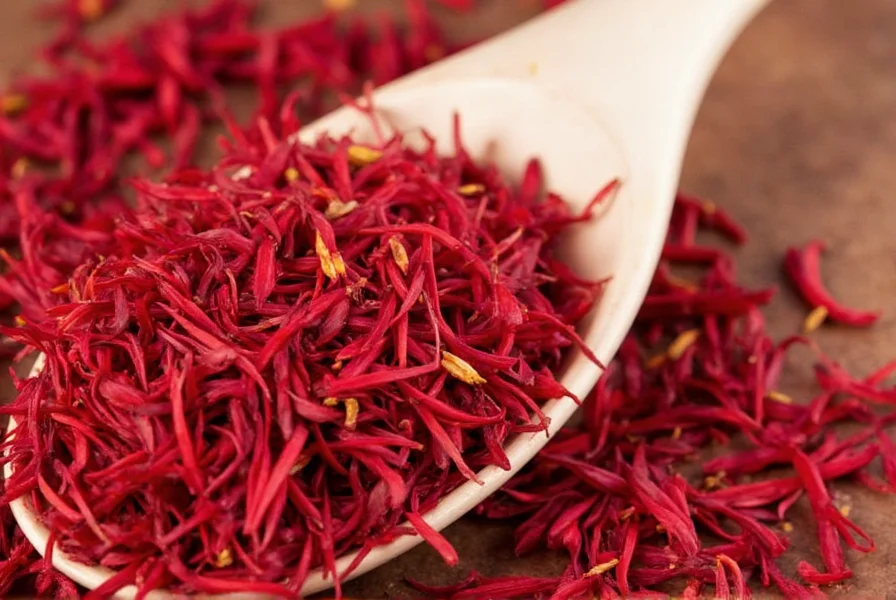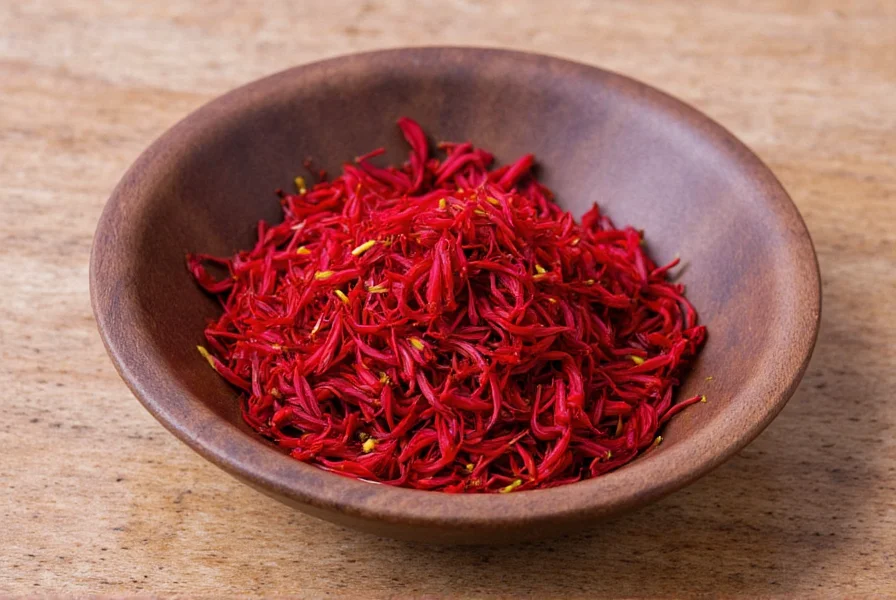Saffron, the world's most expensive spice by weight, has been cultivated for thousands of years across specific regions that provide the ideal conditions for the delicate Crocus sativus flower. Understanding where saffron is grown reveals not just agricultural patterns but centuries of cultural tradition and economic significance.
Top Saffron-Producing Countries
While saffron cultivation spans multiple continents, production is heavily concentrated in certain regions known for their optimal climate and soil conditions. The following table shows the current global production distribution:
| Country | Global Production Share | Primary Growing Regions | Annual Production (Metric Tons) |
|---|---|---|---|
| Iran | 85-90% | Khorasan Province | 400-450 |
| India | 5-6% | Kashmir Valley | 20-25 |
| Greece | 2% | Kozani region | 7-10 |
| Morocco | 1% | Taliouine area | 3-5 |
| Spain | 0.5% | La Mancha region | 1-2 |
| Afghanistan | 0.5% | Herat Province | 1-2 |
Iran: The Saffron Powerhouse
Iran's dominance in saffron production stems from its ideal climate conditions in the northeastern Khorasan province. The region experiences hot, dry summers and cold winters with occasional snowfall—perfect for saffron cultivation. Iranian saffron, particularly from the Torbat Heydarieh and Mashhad areas, is renowned for its deep color and strong aroma. The country's saffron industry has grown significantly through government support and cooperative farming models that help small producers access international markets.
Despite international sanctions affecting trade, Iran maintains its position as the leading saffron producer through both domestic consumption and strategic export channels. The Iranian government has invested in research to improve cultivation techniques and processing methods, further solidifying the country's position in the global saffron market.
Kashmir: India's Saffron Treasure
The Kashmir Valley, particularly around Pampore, produces some of the world's most prized saffron. Known as Kashmiri saffron or Mongra, this variety is distinguished by its deep red threads and intense flavor profile. Kashmiri saffron benefits from geographical indication (GI) protection, recognizing its unique qualities derived from the region's specific microclimate and traditional cultivation methods.
Climate change has presented challenges to Kashmiri saffron farmers, with changing precipitation patterns affecting yields. However, local cooperatives and government initiatives are working to preserve this centuries-old tradition while adapting to modern agricultural challenges. The saffron harvest season in Kashmir typically runs from late October through November, with farmers hand-picking the delicate flowers at dawn.
Climate and Soil Requirements for Saffron Cultivation
Saffron cultivation requires very specific environmental conditions that explain its limited geographic distribution. The Crocus sativus plant thrives in:
- Climate: Mediterranean or semi-arid climate with hot, dry summers (25-35°C) and cold winters (down to -10°C) with some snowfall
- Soil: Well-drained, calcareous (lime-rich) soil with a pH between 6 and 8
- Water: Moderate rainfall (400-600mm annually) with dry periods during bulb maturation
- Elevation: Typically between 200-2,000 meters above sea level
These precise requirements explain why saffron cultivation remains concentrated in specific regions despite numerous attempts to grow it elsewhere. The plant's sensitivity to excessive moisture makes proper drainage essential, as waterlogged conditions can cause corm rot.
European Saffron Traditions
While European production is relatively small compared to Iran and India, several regions maintain historic saffron traditions. Spain's La Mancha region produces high-quality saffron protected by Denominación de Origen certification. Greek saffron from the Kozani region holds Protected Designation of Origin status from the European Union and is known for its exceptionally high crocin content, which gives saffron its coloring strength.
Traditional saffron cultivation in Europe faces challenges from high labor costs and competition from lower-priced imports. However, the emphasis on quality, traceability, and protected status helps these regions maintain premium market positions. In Italy, the small Abruzzo region produces the prized Zafferano dell'Aquila, which also has protected status.
Emerging Saffron Producers
Beyond the traditional growing regions, several countries have developed saffron industries in recent decades. Afghanistan has significantly increased production in Herat province, with saffron becoming an important alternative crop to opium. Australia has established saffron farms in Tasmania and New South Wales, while the United States has small-scale production in Pennsylvania, California, and Vermont.
These emerging producers typically focus on premium markets, emphasizing quality control and traceability. However, they face challenges with scale and cost competitiveness against established producers. The labor-intensive nature of saffron harvesting (requiring approximately 150-200 flowers to produce just 1 gram of saffron) makes large-scale production economically challenging outside traditional regions.
Quality Differences by Region
Saffron quality varies significantly by region due to differences in climate, soil, and processing methods. The International Organization for Standardization (ISO) classifies saffron into four quality grades based on crocin (coloring strength), picrocrocin (bitterness), and safranal (aroma) content:
- ISO 3632 Category I: Highest quality (typically >190 on the coloring strength scale)
- ISO 3632 Category II: Medium quality (150-190)
- ISO 3632 Category III: Lower quality (110-150)
- Below standard: Poor quality (less than 110)
Iranian saffron often scores highest for coloring strength, while Kashmiri saffron is prized for its aroma and flavor profile. Spanish saffron tends to have balanced properties across all three metrics. These regional differences explain why chefs and food manufacturers often specify saffron origin based on their particular culinary requirements.
The Future of Saffron Cultivation
As global demand for saffron continues to grow, traditional and emerging producers face both opportunities and challenges. Climate change poses significant risks to established saffron regions, with changing precipitation patterns and temperature extremes affecting yields. Researchers are working on developing more resilient saffron varieties and improved cultivation techniques.
Technological advances in processing and quality control are helping producers maintain consistency and meet international standards. Meanwhile, growing consumer interest in traceable, ethically produced spices is creating new market opportunities for small-scale producers who can document their cultivation practices and supply chains.
Despite these challenges, saffron's unique properties and cultural significance ensure its continued importance in global agriculture. The specific geographical requirements for saffron cultivation mean that traditional growing regions will likely maintain their dominance, though with evolving production methods and market strategies.

Frequently Asked Questions
Why is Iran the largest producer of saffron?
Iran dominates saffron production due to ideal climate conditions in Khorasan province, centuries of cultivation expertise, government support for saffron farming, and cooperative models that help small producers. The region's hot, dry summers and cold winters with occasional snowfall create perfect conditions for saffron, while traditional knowledge has been refined over generations.
What makes Kashmiri saffron special compared to other varieties?
Kashmiri saffron is prized for its deep red threads, intense aroma, and strong flavor profile. It benefits from geographical indication protection and is grown in the unique microclimate of the Kashmir Valley. Kashmiri saffron typically has higher safranal content (responsible for aroma) compared to other varieties, making it particularly valuable for culinary applications where fragrance is important.
Can saffron be grown outside traditional regions?
While saffron can be cultivated outside traditional regions, it faces significant challenges. The crocus sativus plant requires very specific conditions: hot dry summers, cold winters with some snow, and well-drained soil. Countries like Australia, the United States, and New Zealand have established small-scale production, but they struggle with economic viability due to high labor costs and the crop's sensitivity to environmental conditions.
How does climate affect saffron quality?
Climate significantly impacts saffron quality. Optimal conditions include hot, dry summers for corm maturation and cold winters with some snowfall to break dormancy. Excessive rain during flowering can damage crops, while insufficient cold weather prevents proper flowering. Temperature fluctuations during the flowering period affect the concentration of crocin, picrocrocin, and safranal—the compounds that determine saffron's color, taste, and aroma.
What are the main challenges facing saffron farmers today?
Saffron farmers face multiple challenges including climate change affecting traditional growing patterns, high labor costs due to the crop's hand-harvesting requirements, market competition from lower-priced producers, and quality control issues. Additionally, the long maturation period (flowers must be harvested at dawn and stigmas processed immediately) creates logistical challenges. In some regions, water scarcity and soil degradation further complicate sustainable production.












 浙公网安备
33010002000092号
浙公网安备
33010002000092号 浙B2-20120091-4
浙B2-20120091-4